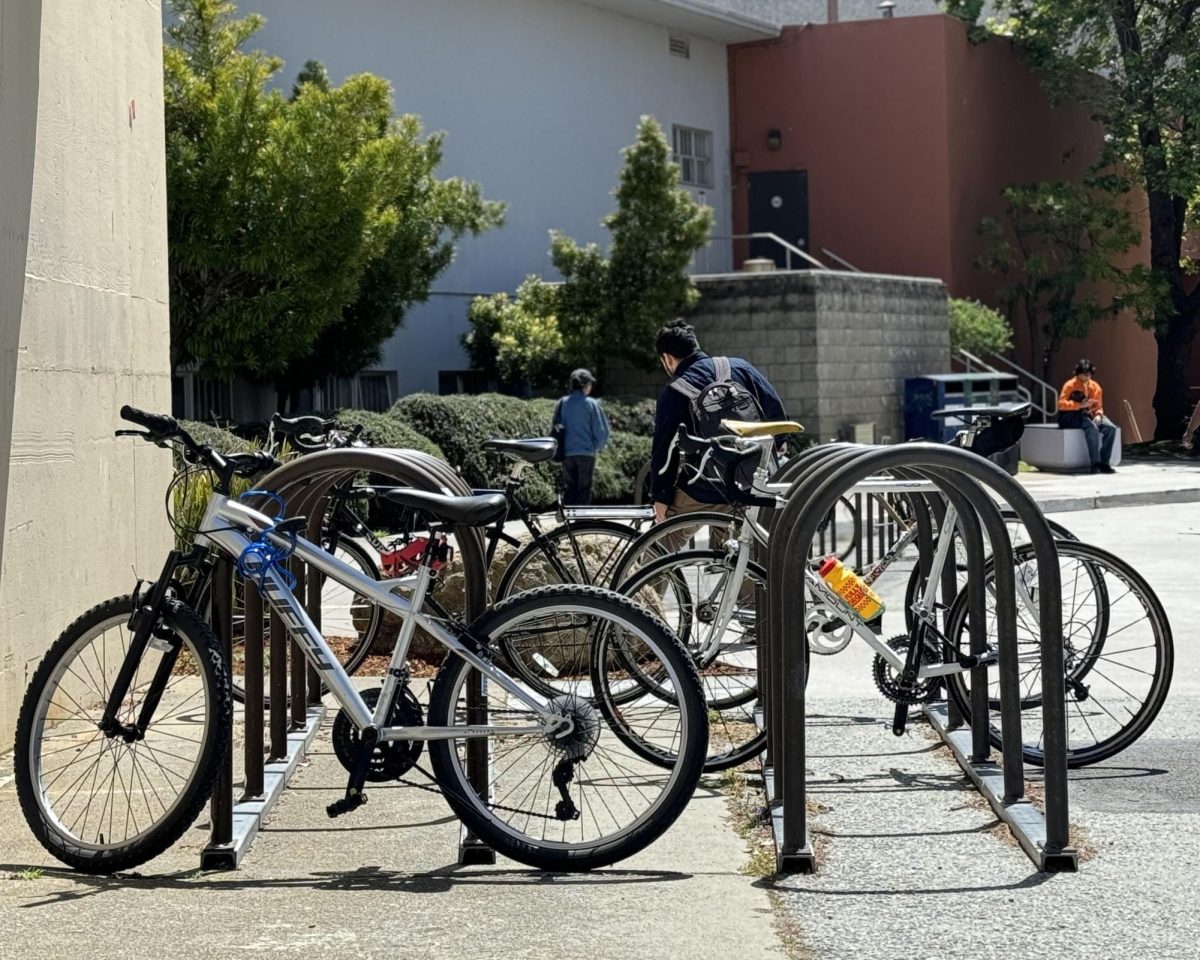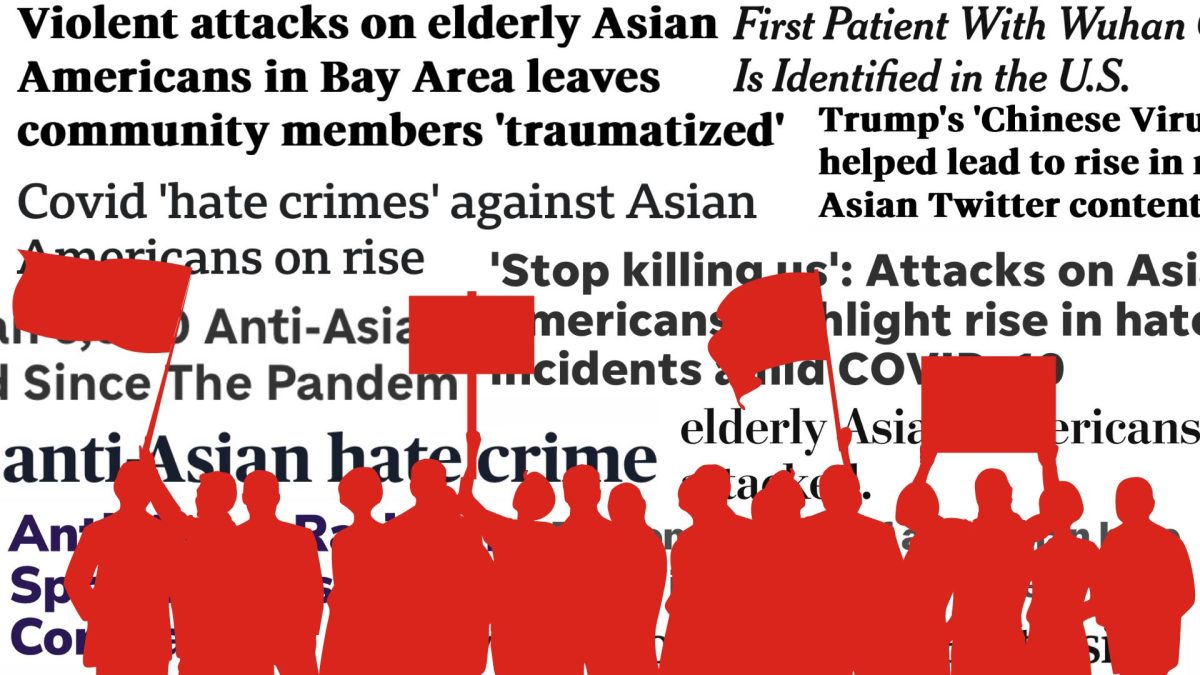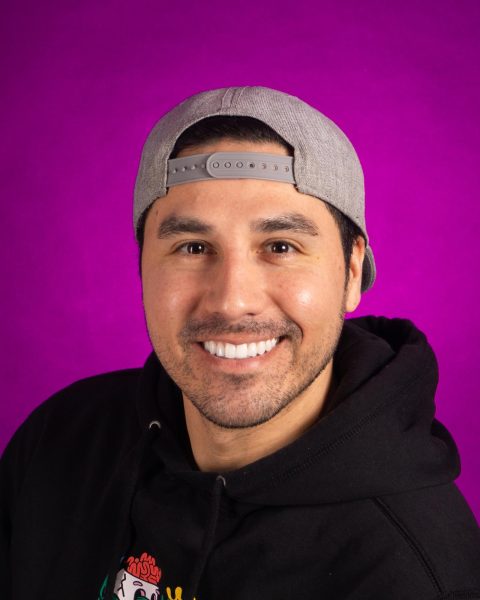Over time, cycling in the city became popular amongst San Franciscans and gradually evolved into the passionate bike enthusiasts groups of cyclists we see in the city today. These groups were pivotal in sparking a transformative movement that laid the groundwork for the city’s bike infrastructure.
Enacted in 1973, San Francisco’s Transit-First Policy declares that “travel by public transit, by bicycle, and on foot must be an attractive alternative to travel by private automobile.” It also stipulates that “decisions regarding the use of limited public street and sidewalk space shall encourage the use of public rights of way by pedestrians, bicyclists, and public transit” and promotes bicycling by “encouraging safe streets for riding, convenient access to transit, bicycle lanes, and secure bicycle parking.”
For over 20 years after the policy was adopted, the city had very little bike infrastructure implemented and mainly had cyclists subjected to bike paths outside of the city until the city’s first bike lanes were implemented in 1971. Urban growth quickly ramped up after the 1989 Loma Prieta earthquake.
The city’s re-urbanization efforts lacked biking infrastructure for the city, causing cyclists who want to ride in the city to take measures into their own hands.
“It was a seizure of San Francisco’s streets by bicyclists,” said Chris Carlsson, co-founder of the Critical Mass Event, a monthly after-work ride in the city on a designated Friday.
“When we first started Critical Mass, there were literally no bike lanes anywhere in the city,” Carlsson said. “When you cycled in the city, you were taking your life into your own hands as you went out into the streets — and as bike riders, we knew that. It wasn’t a surprise and it still is. It’s not really all that different today.”
Carlsson mentions that many city drivers still don’t care about sharing the road with cyclists today.
“I’ve been yelled at by motorists while on the road to ‘grow up and get a car’ or ‘go get a job’ as I was commuting to my actual job,” Carlsson said. “When in reality, it was doing them a favor by having one less car on the road by riding my bike.”
Constant hurdles and red tape have existed around bike infrastructure advocacy since the late 1980s. Carlsson recalls that whenever there were demands to improve conditions for cyclists in the city, some members of the San Francisco Bike Coalition, described by Carlsson as “older men wearing tight, yellow spandex outfits with cleats,” would attend these meetings and oppose the implementation of bike lanes.
Carlsson mentioned that members of the cycling community who were against bike infrastructure would say, “No! We don’t want bike lanes; they are dangerous. We want to be treated just like everyone else on the road, and if there are bike lanes, we’ll be forced to ride in them.”
Carlsson mentioned that these men were followers of John Forester, a longtime supporter of vehicular cycling and a controversial cycling advocate from Stanford University. Forester believed that cyclists would be just as effective as motor vehicles if they put in several bike riding hours. Forester was committed to his self-proclaimed theory and was against bike infrastructure in the city, Carlsson further explained.
Those meetings helped spark the idea for Carlsson and other riders to start riding in the city as a group, which helped bring about the birth of Critical Mass. Carlsson and others from the biking community agreed to form the group to ride together after work once a month in the city.
“We planned to meet on Market Street and cyclists showed up by the dozens and took us by surprise. We just kept going from there,” Carlsson said.
The Critical Mass event grew to about 5,000 riders over several years. In 1997, former San Francisco Mayor Willie Brown supported over 250 police arrests during that year’s ride event.
“The Critical Mass Event that ignited those riots with police lit a fire and brought the cycling community together,” Carlsson said. “The San Francisco Bike Coalition went from a few members to thousands.”
That cultural shift for cyclists began a grassroots movement for biking advocacy for safer conditions for the biking community through added bike infrastructure spread throughout the city.
“I do think that grassroots bike activism was the first step in normalizing bikes into the city and its events like Critical Mass that helped make that a reality,” said Adrian Leung, the bike-share & bike parking program manager.
Originally from Southern California, Leung started his journey into cycling after arriving in the Bay Area in 2003.
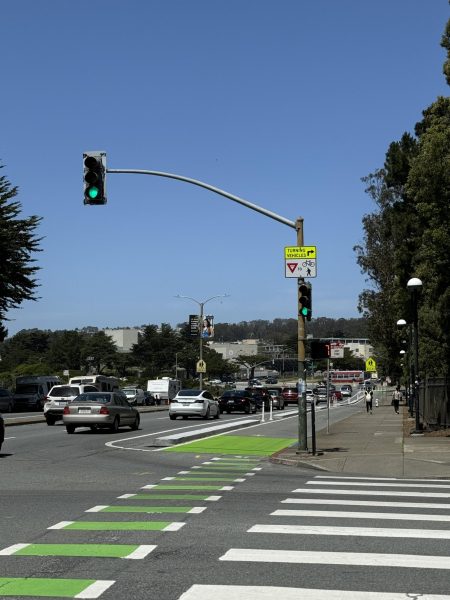
“I realized that I could help make my new home more bikeable,” Leung said.
Leung considers how people view transportation as part of a larger identity discussion. Before joining the San Francisco Municipal Transportation Agency, Leung was involved with different cultural organizations and arts groups. Then, he realized that cycling was its spatial interpretation of how people see the world through urban transportation.
Leung notes that safety is the SFMTA’s number one priority. He stated that in 2023, San Francisco reached “Vision Zero,” which describes this milestone with zero deaths and serious accidents related to cyclists’ safety.
“There’s a ton more work to do and we need more resources to keep pushing for normalcy around bike safety to mitigate confused drivers,” Leung said.
The SFMTA aims toward a future where city residents and visitors can choose which transportation options to utilize in San Francisco without confusion or fear. But Leung stated that we’re a long way from that.
When designing new bike lane infrastructure, Leung explains there are many factors, data and outreach that go into each design before breaking ground.
“I believe that the public realm is a contested space. Residents, merchants and community members look at the shared areas in their community for their individual needs,” Leung said.
For example, the American Disabilities Act requires the city to adhere to specific traffic requirements, such as ensuring that wheelchair users can access the area around the bike infrastructure.
“There are a lot of constraints and needs that are being piled up that the SFMTA takes into consideration when designing new bike infrastructure,” Leung said. “The pressures and challenges we face are myriad in terms of what can actually be built.”
An example of newer bike infrastructure that the biking community hasn’t favored is the center bike lanes on Valencia Street in the Mission district. SFMTA proposed several designs of new bike infrastructure to be added to the community between 15th and 23rd Streets.
Due to the COVID-19 pandemic, many businesses in the Valencia pilot zone had parklets and did not want to remove them. While considering this and other factors into consideration for the community, the SFMTA chose a design that added bike lanes in the center of the street.
“There are more people in the city with the same amount of parking spaces available. There’s a huge demand for parking and bike safety right now,” Leung said.
In February 2024, the SFMTA released data on the Valencia bike pilot and found that businesses were still struggling, drivers were confused and cyclists were still concerned about their safety. The SFMTA is in early discussions of a pilot redesign for Valencia Street and is continuing to work with the community on those efforts.
Added constraints to the SFMTA bike infrastructure designs are also being affected by the city’s political network.
“Billionaires that donate to the mayor’s office that don’t live in the city are also involved with infrastructure projects and can unfortunately sometimes heavily affect some of the designs that are implemented,” Leung said.
Leung gave another example of a bike share project being canceled by the mayor’s office due to the location of the bike share station. The proposed area was in front of the Decades in Fashion storefront in the Lower Haight District. Upon further research, Leung found that it was the same store that used to dress San Francisco Mayor London Breed when she was a supervisor for that district.
“That part of the transportation infrastructure systems effort is trumping the actual transportation logic,” Leung said.
The SFMTA strives to advance transportation while preserving the community’s needs in a collaborative ideational effort with the community.
“The transportation system is trying to accommodate as much as possible while trying to maintain the higher goals of safety — it’s not easy,” Leung said.
Leung explained that the SFMTA studies high-injury network areas to address the frequent collisions that are directly affecting the community.
“The areas in the public realm reflect the current conflicts in the public realm about how traffic infrastructure is designed for the city,” he said.
Leung is optimistic about the SFMTA’s bright future. The SFMTA has a Quick-Build Program that targets areas of the city that require immediate bike safety improvements for San Francisco and adds progress to the SFMTA’s commitment to making Vision Zero in all city districts a reality.
As bike infrastructure starts to splinter around different parts of San Francisco, cyclists rely on it to keep them safe when driving a car might not be an option.
Bay Area resident Ash Clayton, a San Francisco State University senior, has been an active bike rider for 10 years. Ash rides his bike to campus from the Tenderloin and his route is long and strenuous.
“My commute is a combination of really nice off-the-road paths and terrifying bike lane connectors, specifically around the campus,” Clayton said.
Clayton describes the traffic circles around SFSU as “rings of danger” for the cycling community.
“Coming from the city, there’s no way that makes sense where I have to slightly break the law in the name of safety,” Clayton said.
Clayton described his daily bike route as a maze caused by poor city planning, aggressive drivers, and a lack of bike infrastructure.
“I can see some of the bike infrastructure changes that the city has been making have been in the name of progress and safety, but there could definitely be improvements,” Clayton said.
Though Clayton is happy to see the changes being implemented for bike safety, Clayton is concerned about the lack of education the city provides to its commuters, who must abide by the newly enacted bike infrastructure.
“Some of the new bike infrastructure is supposably safer but they’re being sprung on people with zero education on the driver’s side and the cyclist side,” Clayton said.
Cyclist Dalton Nonweiler, a Bay Area resident, described his frustration with the bike infrastructure around SFSU during group rides with fellow bike riders.
“The areas of concern are right on Lake Merced Blvd. Areas designated for bikes are not always maintained and some of the potholes we encounter damage our bikes pretty severely,” Nonweiler said.
Bike damage is the least of Nonweiler’s worries during his rides. Even a cyclist who follows all road laws and is the “perfect cyclist” remains vulnerable to careless drivers.
“You have to be a defensive rider just to survive, but that is the reality when riding a bike on roads that are car-centric,” he said.
In 2023, the SFMTA launched a “Slow Streets mural pilot program” that targeted slow-vehicle traffic street routes to enhance community engagement and safety. The initiative aimed at creating low-stress, shared corridors while prioritizing active transportation. Art murals are painted directly onto the street pavement and add color to the designated slow streets. The murals are curated and maintained by community members and promote the streets as spaces for the community.
“A lot of the slow streets have been great for biking — it’s a lot less defensive cycling for people who ride bikes and a sigh of relief when riding,” Nonweiler said.
Though Nonweiler is an avid supporter of bike infrastructure in the city, some of the safety tools added by the SFMTA — such as rubber bumpers and plastic delineators — cause concerns for cyclists and could cause more harm than good.
“I do think that the priorities of the people who are riding more for sport are at odds with the people who are riding for commuting purposes,” he said. “So the way biking infrastructure is designed matters.”
SFSU Philosophy Professor Eric Nyeste has been an active city bike rider since 2007 and rides his bike to campus daily. Nyeste described the traitorous route he uses to get to class.
“There’s really no designated bike lanes available if there aren’t stanchions to protect riders within bike infrastructures,” Nyeste said.
Nyeste explains that drivers take their driving cues from painted images and signage on the road. This is first instilled in people when they receive their driver’s license, and most won’t ever relearn what some of the updated road signage could represent as road safety evolves.
“Some people don’t realize that painted dots mean one thing and solid lines mean another thing,” Nyeste said. “And now increasingly people rely on electronic means to navigate — even on bicycles, people are using GPS devices to navigate the city.”
Nyeste explained that when he first moved to San Francisco in 2007, there were a few bike lanes on either side of Valencia Street in the Mission District and the city was about to break ground on a bike lane on Howard Street in the Financial District. In an era where bike lanes were scarce, cyclists had to act aggressively to share the road with traffic.
“I would find myself in and out of traffic and find myself taking over part of the lane and pushing cars out, and that’s just how it was,” Nyeste said. “A bicycle was in fact a human-powered motorcycle at that point – with all the responsibilities and dangers that come with traveling on a road space.”
Nyeste credits Vision Zero SF which initially helped spotlight the increase in traffic deaths as more people were using their bikes around the city. Vision Zero is San Francisco’s road safety policy initiative that is focused on building safety measures for the city and aims to eliminate traffic deaths through bike safety awareness.
The campaign was officially adopted by San Francisco in 2014.
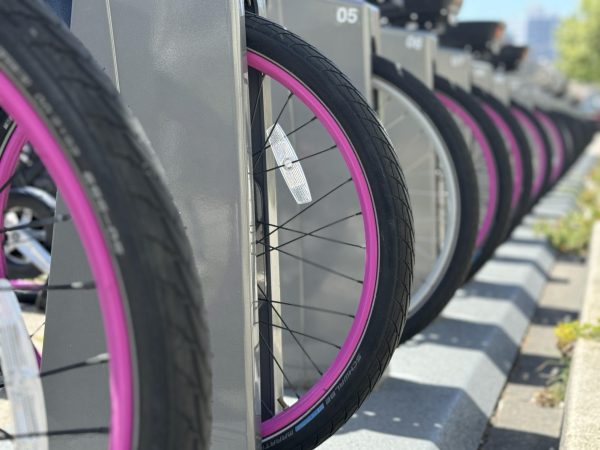
“Almost overnight, my friends and I would start to notice more and more bike lanes pop up around the city,” Nyeste said.
With the advent of e-bikes around the city, Nyeste believes one of the major contributing factors to roadway dangers is drivers’ lack of attentiveness.
“There is an increase in distractions on the roadway these days. Drivers are looking at their GPS instead of paying attention to the road — they aren’t necessarily trained to have a route established before getting behind the wheel,” Nyeste said.
Nyeste further explains that the existing road infrastructure around SFSU has been built to help minimize speed and road confusion.
“I think that there are a lot of missed opportunities to help people recalibrate their values when it comes to using a bicycle on an urban roadway,” he said.
Joshua Singer, an associate professor in the School of Design at SFSU resides in Alameda and part of his daily campus commute includes biking to campus from the Daly City BART station.
“I’ve been biking my whole life — I bike for commuting, shopping, recreationally and sometimes racing,” Singer said.
Singer has lived in the Bay Area for about 30 years and is very familiar with riding in dense, urban spaces and the risks that come with it.
“Though I’ve seen a big change in bike infrastructure in and around the city, it’s still pretty piecemeal,” Singer said.
Singer further describes the multiple routes he uses to get to campus and all of them are far from perfect.
“Some of the routes I take hardly have any designated bike lanes and are mainly dominated by cars,” he said. “This can sometimes be very frightening and stressful — I always must be on high alert for anything that is a high risk of injury. My life depends on it. And that can be stressful.”
Singer explains when riding in a designated bike lane, he feels safe and relies on biking infrastructure to help delineate spaces between drivers and cyclists.
“Our transit infrastructure has been built so much around cars, it’s both structurally and politically really hard to make the kind of changes we know it would take to make them safe for both cyclists and drivers,” Singer said.
Based on research conducted by Singer, there was a lot of feedback from bike advocacy groups, such as the San Francisco Bicycle Coalition, that advised against the center lanes on Valencia Street to the SFMTA. Many of those concerns were ignored. Since the project launched in April 2023, there have been multiple accidents caused by confused drivers driving onto the center bike path.
The SFMTA is optimistic about the future of the safety of bike infrastructure in San Francisco and will continue to use the data from piloting programs like the Valencia Street project to create safer cycling spaces for the community’s future.




